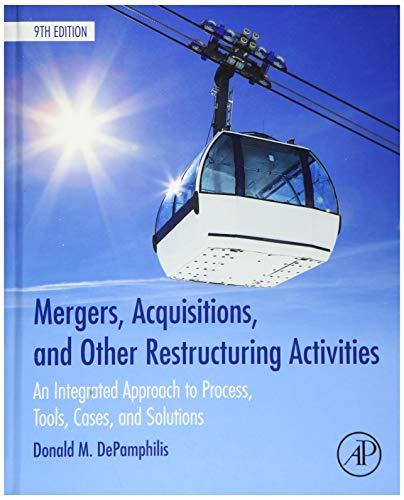Targacept still had substantial cash on hand but few attractive investment opportunities. Its prospects were to continue
Question:
Targacept still had substantial cash on hand but few attractive investment opportunities. Its prospects were to continue to burn cash by going it alone, seek a partner, or merge with a firm having significant growth opportunities. The firm projected that at the current rate of usage it would exhaust its cash on hand in 18–24 months and few parties seemed interested in investing in the foundering company. A merger seemed like the best hope. Targacept tried to conserve cash by cutting back on its operations. But this would simply extend the day of reckoning. By the time it was able to find a merger partner, it had laid off most of its employees. By early 2015, Targacept had just 18 full-time employees down from a peak of 144 in 2012.
In contrast to Targacept, Catalyst had a series of promising new drugs but was running short of cash. The long-lead time required to bring drugs to market means that many biotech firms experience an inability to finance aggressive R&D projects. To finance future research and development, it too had to partner with a large pharmaceutical firm, or to go public through an IPO or a reverse merger. Cutbacks at large drug companies made the likelihood of finding an investment partner slim and the lackluster stock market made an IPO impractical. Therefore, the firm decided it needed to merge with a cash-flush public firm that offered the opportunity to attract new R&D talent with the offer of stock options and the ability to raise cash through future equity issues.
Early in 2015, biotech firm Tobira Therapeutics tested the waters by going public through a reverse merger after its IPO fizzled. This successful reverse merger seemed to pave the way for Catalyst to pursue this means of going public during the choppy 2015 stock market. The merger between Catalyst and Targacept was announced in May 2015 and represented the creation of a new company named Catalyst Biosciences. The new firm contained Catalyst’s protease therapeutics pipeline and financial resources came mostly from Targacept. It represented a well-funded firm hoping to develop new treatment options for patients with bleeding disorders.....
Discussion Questions:
1. What is the purchase price of Targacept and how is it financed? How does this financing structure potentially help the combined firm Catalyst Biosciences fund future spending? How would Catalyst’s original shareholders be impacted by a conversion of the notes?
2. What are common reasons for a private firm to go public? What are the advantages and disadvantages or doing so? Be specific.
3. What are corporate shells, and how can they create value? Be specific.
4. D iscuss the pros and cons of a reverse merger versus an IPO.
5. What is the purpose of private firm in listing of a major stock exchange such as NASDAQ?
Step by Step Answer:

Mergers Acquisitions And Other Restructuring Activities
ISBN: 9780128016091
9th Edition
Authors: Donald DePamphilis





